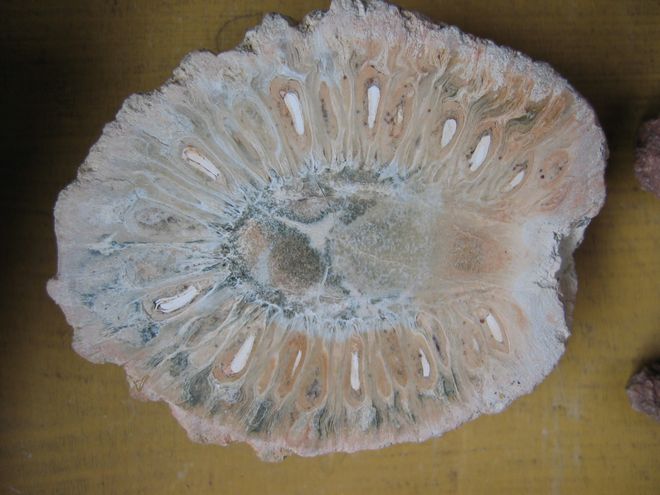Key Takeaways About Prehistoric Trees
- Prehistoric trees still exist today. Ancient species such as Ginkgo and the Monkey Puzzle tree can still be found in some parts of the globe.
- Prehistoric trees such as Ginkgo The genus dates back to the Jurassic period, 174 million years ago.
- Prehistoric trees existed before dinosaurs. Some of these tree species began to appear during the Triassic period, approximately 250–201 million years ago.
The oldest individual trees in the world date back so far that they predate most of the products and inventions that have since been made from wood. One Great Basin bristlecone pine in California named Methuselah is more than 4,850 years old and predates the Pyramids of Giza and all Mesoamerican pyramids. Meanwhile, the cypress tree in Chile has more than 3,650 rings.
Both of these trees are prehistoric in the sense that they predate written records in the places where they were found. But beyond individual trees, some species discovered today belong to entirely primitive genera, going back at least to the time of the dinosaurs.
Read more: New fossil discovery reveals surprising insights into prehistoric human behavior
Are there any other prehistoric trees?
Technically speaking, almost all existing species are prehistoric, having evolved long before the invention of writing, when historical records began, some 5,000 years ago. Indeed, Methuselah appeared before recorded history Mayan approximately one and a half millennia and only a few centuries younger than the first Sumerian cuneiform and Egyptian hieroglyphs.
Based on the fossil record, it is almost impossible to determine the oldest tree species. But some trees today belong to primitive genera. Paleobotanists know some of the oldest surviving genera from discoveries in China and South America. Ginkgo And Araucaria.
“These are your two oldest contenders for the title of oldest genus,” says Peter Wilf, a paleobiologist at Pennsylvania State University.
How old Ginkgo Trees?
Ginkgo biloba – sometimes called adianthia – the only surviving tree Ginkgo genus. Based on fossil records, species Ginkgo with reproductive organs similar to those of biloba belong to the Middle Jurassic Period started about 174 million years ago. Ginkgo yimaensis is currently the oldest known tree of this genus – the Late Jurassic fossils seemed a little closer to the modern one. Ginkgo biloba the more primitive yimaensis, according to research in Review of paleobotany and palynology.
Although there used to be more Ginkgo views around, G. Biloba is the latter, sometimes considered a living fossil. Not only is it the last member of its genus, it is the last member of a class of seed plants that dates back much further than the Jurassic period—Ginkgoaceae first appeared 270 million years ago in the Permian.
G. Biloba The International Union for Conservation of Nature considers it critically endangered due to deforestation – even today it is not entirely clear whether some so-called wild ginkgos in parts of Asia were actually once planted by Buddhist monks, who consider them sacred, according to the book. Fellow Witnesses: Trees.
How old are the monkey puzzle trees?
One of the reasons it's difficult to study truly ancient fossil trees as whole organisms is their size—in most cases, researchers only find leaves, a few branches, or pieces of wood. It is difficult to imagine a whole tall primitive tree.
This is not a problem with Araucaria trees. Although we only have fragments of the ancients Ginkgo, we're all petrified Araucaria in Patagonia.
“It’s just another level of paleobotany,” Wilf says.
Prehistoric trees such as Araucaria can be found in fossilized form in the petrified forest of Cerro Cuadrado.
(Image credit: Peter Wilf)
Many of the best preserved examples Araucaria is wonderful, found in the province of Santa Cruz, Argentina., in the so-called Petrified Forest of Cerro Cuadrado. In this area, entire fossilized tree trunks are still preserved, as well as fossilized seed cones and even embryos and seedlings, the length of which easily exceeded 60 meters. [about 200 feet] tall when they were alive, says Wilf.
These fossils A. wonderful also date back to the Middle Jurassic, like the oldest Ginkgo.
He adds that there are older Araucaria fossils, but they are more fragmentary than mirabilis preserved in Patagonia.
There are still a number of living species Araucaria, It is a species of coniferous tree found mainly in the Southern Hemisphere today. One of the species most commonly called the puzzle monkey (Araucaria araucana) is found in southern South America, and others are found in Australia, New Caledonia and New Guinea.
Did trees exist before dinosaurs?

Petrified cone of a prehistoric tree Araucaria is wonderful
(Image credit: Peter Wilf)
Early ancestors Ginkgo Trees appeared much earlier than dinosaurs. And although artists often mistakenly depict modern monkey trees next to dinosaurs, species such as A. wonderful They were probably nearby.
“[Monkey-puzzle trees] very popular in breeding dinosaurs,” says Wilf.
The first dinosaurs began to appear in the Triassic period, which preceded the Jurassic period. But many trees that exist today are descended from groups that date back to the Permian period, which preceded the Jurassic period.
The amazing fossils also provide insight into ancient trees and forests that date back even further than the Permian period. Paleobotanists have discovered Middle Devonian fossil forests in New York State that are largely dominated by primitive tree ferns.
By the Late Devonian, which began about 382 million years ago, waterways were dominated by trees with fern-like foliage and coniferous trunks. These plants belong to a genus called Archaeopteris, which was widespread in what is now the northeastern United States and Europe. Trees are not seed plants at all – they reproduce by spores, the life cycle of which depends on water. They probably grew to about 45 to 50 feet. [14 to 15 meters tall]- says Wilf.
The first large seed trees began to appear in the Carboniferous period, beginning about 323 million years ago, in the early conifers and an extinct conifer relative called Cordaites.
“Now we're talking about something that looks more like a modern forest,” says Wilf. These trees formed vast forests that covered the surface of the earth, with massive trunks reaching approximately 165 feet in height. [about 50 meters] in height.
When the non-avian dinosaurs became extinct around 66 million years ago, the forests really began to change into something more familiar to us today. The fact is that the angiosperms, or flowering plants, that dominate much of the world today were diverse but not dominant or large when dinosaurs were still alive. They truly began to dominate only after Asteroid Chicxulub hit the Earth.
“The modern rainforest only appears after the extinction of the dinosaurs,” says Wilf.
Read more: Scientists Research How Ginkgo Trees Remain Young for Hundreds of Years
Article sources
Our authors in discovermagazine.com use peer-reviewed research and high-quality sources for our articles, and our editors review scientific accuracy and editorial standards. Review the sources used below for this article:








